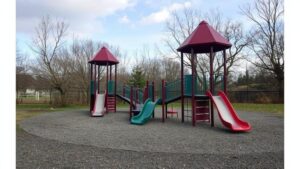Recovering Stolen Goods Hidden in Caves and Cliffside Grottos
Recovering Stolen Goods Hidden in Caves and Cliffside Grottos
The recovery of stolen goods is a complex endeavor, especially when those items are hidden in remote locations such as caves and cliffside grottos. This article delves into the various aspects of locating and retrieving these stolen articles, discussing the methodologies employed by law enforcement agencies and the challenges they face in such operations.
The Challenge of Retrieval
Recovering stolen goods from caves and grottos presents unique obstacles that are not commonly encountered in urban thefts. These challenges include:
- Geographical Barriers: The rugged terrains of caves and cliffs make access difficult. Specialized gear is often required, including climbing equipment and surveillance tools.
- Environmental Hazards: Caves can harbor natural dangers such as rock falls, unstable soil, and water hazards, which complicate recovery efforts.
- Criminal Sophistication: Criminals frequently employ strategic hiding techniques that take advantage of natural formations, making discovery a significant challenge.
Methods of Detection
Several methodologies are employed in the recovery of stolen goods hidden in such locations. These methodologies often involve a combination of technology and traditional investigative techniques.
Forensic Analysis
Forensic analysis plays a critical role in the recovery of stolen items. Law enforcement agencies utilize advanced technologies like:
- Ground Penetrating Radar (GPR): This technology allows law enforcement to scan subsurface features without the need for excavation, providing valuable insights into hidden caches.
- Thermal Imaging: Used to detect heat signatures, thermal imaging can assist in locating warm items or the presence of individuals associated with the theft.
Community Engagement
Engaging the local community can also facilitate recovery efforts. Local inhabitants often serve as valuable informants. For example, in 2019, police in Italy leveraged community tips to uncover a hidden stash in caves used by organized crime. This collaboration resulted in the recovery of ancient artifacts worth millions.
Case Studies
Numerous cases illustrate the successful recovery of stolen items from caves and cliffside grottos, underscoring the effectiveness of various strategies employed during such operations.
Operation Cave Rescue
One notable operation, conducted by the illegal trade unit of the FBI, resulted in the recovery of stolen Native American artifacts within a cave system in Arizona. Utilizing the above-mentioned technologies and community intelligence, agents were able to isolate the specific cave and infiltrate it successfully, returning the items to their rightful owners.
Cliffside Recovery in California
In 2021, California authorities recovered stolen luxury items valued at over $500,000 hidden in a cliffside grotto. This operation involved extensive aerial surveillance and coordinated ground searches, allowing law enforcement to secure the items with minimal risk to personnel.
Legal and Ethical Considerations
The recovery of stolen goods also raises important legal and ethical considerations. It is vital that law enforcement agencies adhere to the protocol to avoid claims of trespassing or violating property rights. Often, stolen items may have complex ownership issues, especially in cases involving historical artifacts.
- Adhering to Cultural Sensitivities: Agencies must engage with relevant cultural communities when artifacts are involved.
- Chain of Custody: Maintaining a clear chain of custody ensures that recovered items can be legally reinstated to their rightful owners.
Conclusion
Recovering stolen goods from caves and cliffside grottos demands a multifaceted strategy, incorporating technology, community engagement, and strict adherence to legal norms. As shown through various case studies, law enforcement agencies that leverage these practices can achieve significant success in their recovery efforts.
To improve recovery success rates, it is crucial for law enforcement agencies to continually adapt their methodologies, invest in training, and collaborate with local communities. Ultimately, proactive measures and community partnerships can create a powerful force in the fight against theft and the recovery of stolen goods.

